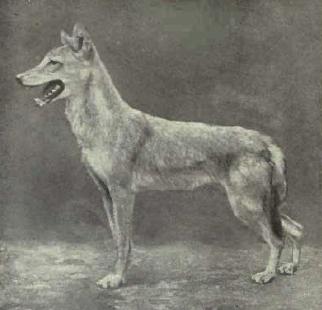The Egyptian jackal, which may have been the inspiration for the Egyptian god Anubis, is actually not a jackal at all but a member of the wolf family. New genetic research in the open-access journal PLoS ONE finds that the Egyptian jackal is Africa’s only member of the gray wolf family. The new wolf, dubbed by researchers as the African wolf, is most closely related to the Himalayan wolf.
“We could hardly believe our own eyes when we found wolf DNA that did not match anything in GenBank,” lead author, Dr Eli Rueness, said in a press release. GenBank is an open-access nucleotide database.
The genetic data also points to an early origin for the Egyptian jackal/African wolf. In fact, researchers believe the animal is older than well-known wolves of the northern hemisphere. According to the study, Indian, Himalayan, and the new African wolf, broke off from the gray wolf before it moved north, colonizing Europe, northern Asia, and the Americas, further subdividing into different subspecies. Ethiopian wolves, which are a unique species of canids, are older still.
 Long suspected by some biologists, genetic research has shown that the Egyptian jackal is actually a wolf. |
The study does not appear to make a recommendation whether or not this new wolf should be considered a unique species in its own right or another subspecies of the grey wolf (Canis lupus). Currently, gray wolf subspecies number in the thirties, and distinction between species and subspecies continues to be debated for a number of them.
However the new African wolf is classified, researchers argue the discovery must change how the animal is viewed in conservation. The authors call for the African wolf to be assessed individually, especially considering evidence that the animal is rare. The animal is not protected in Egypt and is often persecuted as it is considered a threat to livestock.
In good news, the researchers discovered that the African wolf, previously Egyptian jackal, is actually present in the Ethiopian highlands, expanding its known range considerably.
“This study shows the strengths of modern genetic techniques: old puzzles can be solved,” Nils Chr. Stenseth, Chair of the Centre for Ecological and Evolutionary Synthesis (CEES) and an author of the paper, says.
Citation: Rueness EK, Asmyhr MG, Sillero-Zubiri C, Macdonald DW, Bekele A, et al. (2011) The Cryptic African Wolf: Canis aureus lupaster Is Not a Golden Jackal and Is Not Endemic to Egypt. PLoS ONE 6(1): e16385. doi:10.1371/journal.pone.0016385
Related articles
What do wolves and sharks have in common?

(11/15/2010) Sharks dwell in the ocean, wolves on land; sharks are a type of fish, wolves are a mammal; sharks go back some 400 million years, wolves only some 2 million years. So, these animals should have little in common, right? However, a new study in Frontiers in Ecology and the Environment points to surprising similarities among these disparate animals. As top predators, both wolves and sharks impact their prey and other species in similar ways.
Saving the world’s rarest wolf

(11/09/2009) Living on the roof of Africa, the Ethiopian wolf is one of the world’s rarest carnivores, if not the rarest! Trapped on a few mountain islands rising over 4,000 meters above sea level on either/both sides of the Great Rift Valley, this unique canid has so far survived millennia of human-animal interactions in one of Africa’s most densely populated rural lands. But the threat of climate change and a shifting agriculture frontier may require new conservation measures, according to Argentine-born Claudio Sillero, the world’s foremost expert on the Ethiopian wolf, who has spent two decades championing this rare species.
Why top predators matter: an in-depth look at new research
(02/02/2010) Few species have faced such vitriolic hatred from humans as the world’s top predators. Considered by many as pests—often as dangerous—they have been gunned down, poisoned, speared, ‘finned’, and decimated across their habitats. Even where large areas of habitat are protected, the one thing that is often missing are top predators. However, new research over the past few decades is showing just how vital these predators are to ecosystems. Biologists have long known that predators control populations of prey animals, but new studies show that they may do much more. From controlling smaller predators to protecting river banks from erosion to providing nutrient hotspots, it appears that top predators are indispensible to a working ecosystem. Top predators sit at the apex of an ecosystem’s food chain. Wolves in Alaska, tigers in Siberia, lions in Kenya, white sharks in the Pacific are all examples of top predators.
